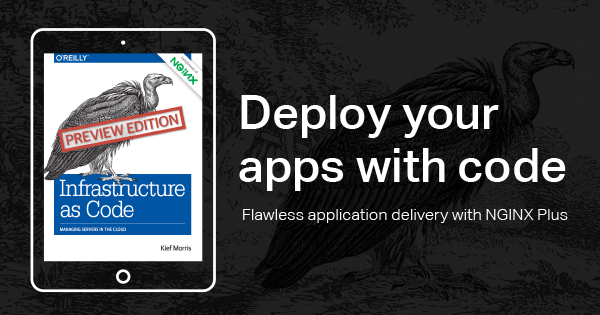Application development has undergone drastic changes in the past few years, driven by the demand for ever‑increasing performance, scale, and resiliency. Single‑server and multi‑server deployment models that require manual configuration and endless hours of routine drudgery are frowned upon. Today, applications are increasingly deployed on clusters of dozens, hundreds, and even thousands of containers and virtual machines. This shift requires enormous cooperation between development, operations, and traditional IT management teams.
This new cooperative approach to infrastructure management led to the creation of “Infrastructure as Code” – an approach where servers, networks, firewalls, and services are abstracted to software and data. Infrastructure-as-code methodology utilizes software development best practices, such as version control systems and automated testing libraries, to build simple, easy, and repeatable, human‑readable infrastructure configurations. Thanks to these tools, you can manage complete application environments – including servers, networks, firewalls, and services – more efficiently than ever before.
As you’ll see throughout the new O’Reilly ebook, Infrastructure as Code, by Kief Morris, Cloud Specialist at ThoughtWorks, the benefits of this modern infrastructure management model appeal to application developers, system administrators, and IT management alike.
The benefits of Infrastructure as Code include trail audits and change visibility, as well as savings in cost and time. Application owners and other administrations now have full visibility into infrastructure modifications because changes are submitted and processed via commits. Significant cost reductions result because servers and services are provisioned only when they are actively needed for application usage, and significant time is saved by eliminating manual provisioning and management of individual servers and services.
As you’ll realize throughout this book, NGINX and NGINX Plus are key software components in the modern application stack. NGINX Plus, a complete application delivery platform for the modern web, provides enterprise‑ready features including load balancing, session persistence, health checks, advanced monitoring, and a number of other features that are particularly useful for organizations adopting the Infrastructure as Code model.
NGINX Plus enables greater scale and flexibility with its API that supports automatic reconfiguration of load‑balanced servers when the set of container instances changes, without having to reload configuration files. NGINX Plus also ensures optimal reliability and uptime of your applications by monitoring their health, and providing detailed application visibility. Try out these features with your applications today with a free 30-day trial of NGINX Plus.
Download Infrastructure as Code, published by O’Reilly Media, for free!

